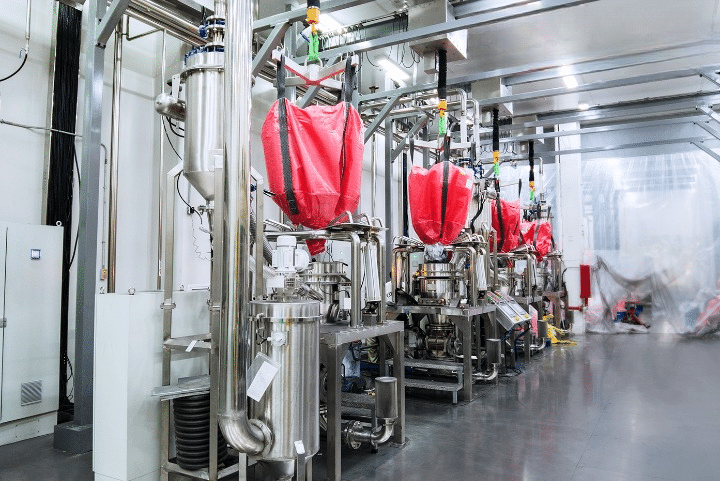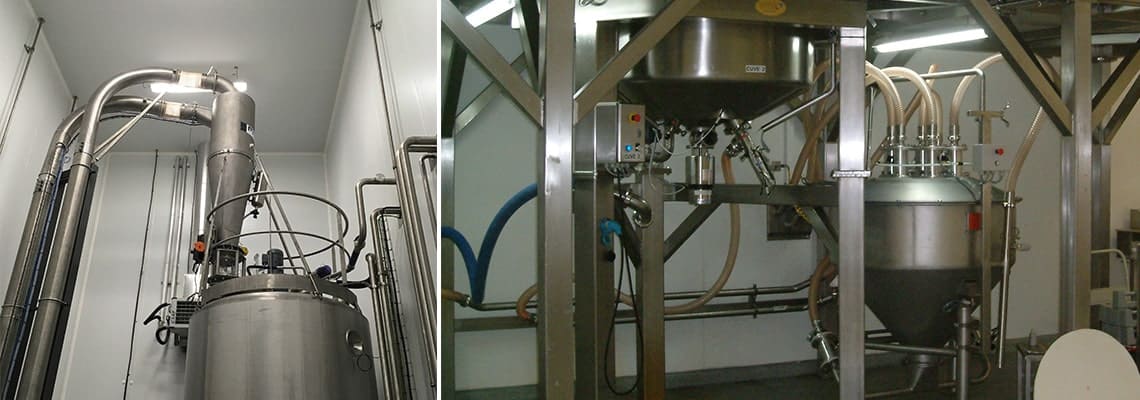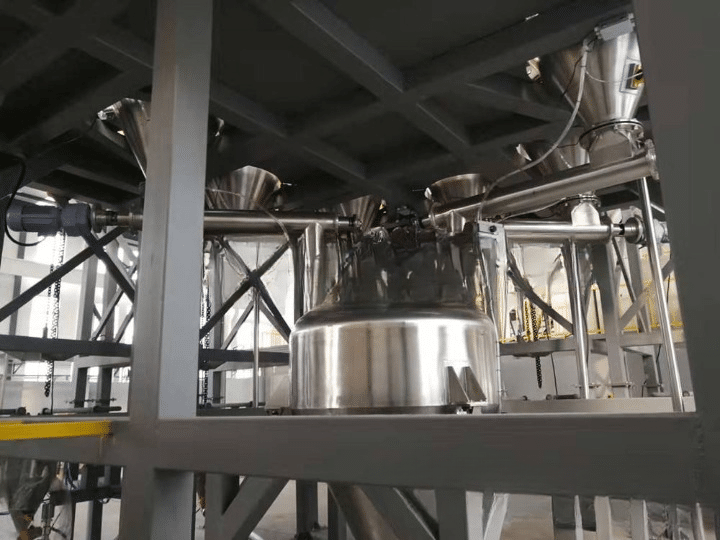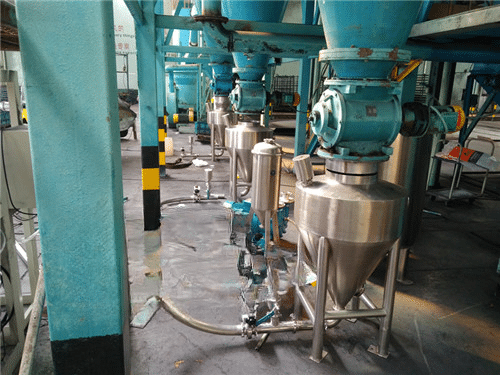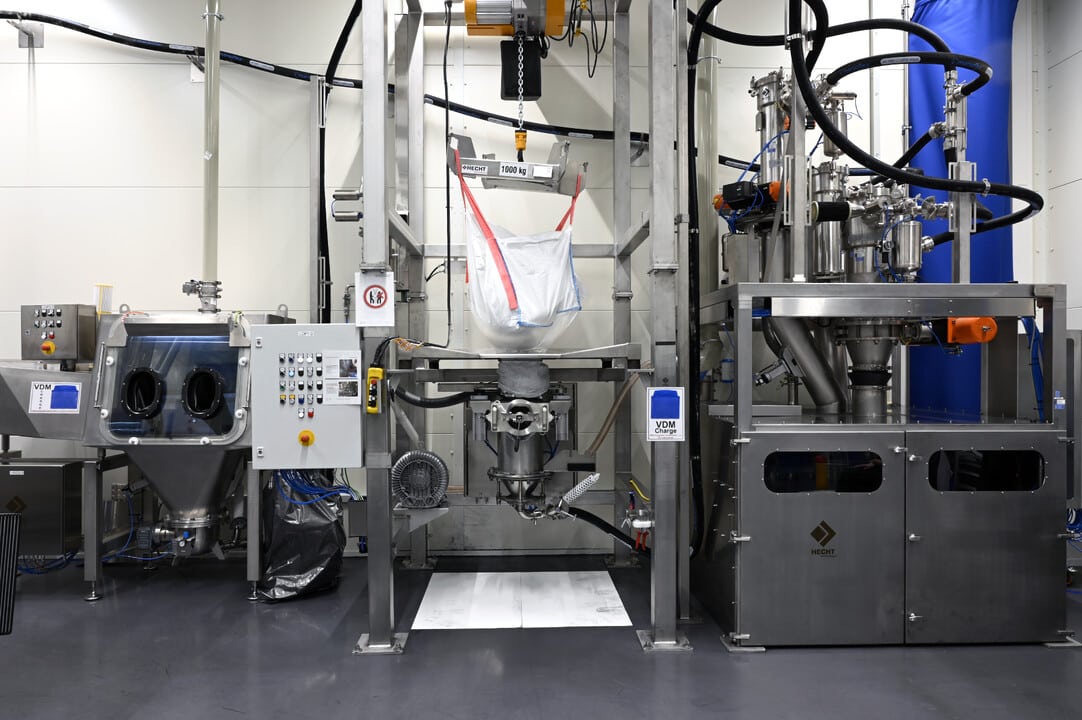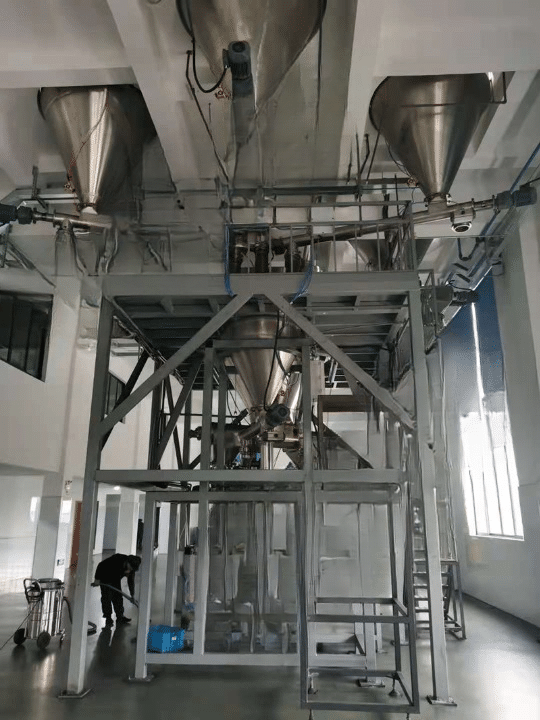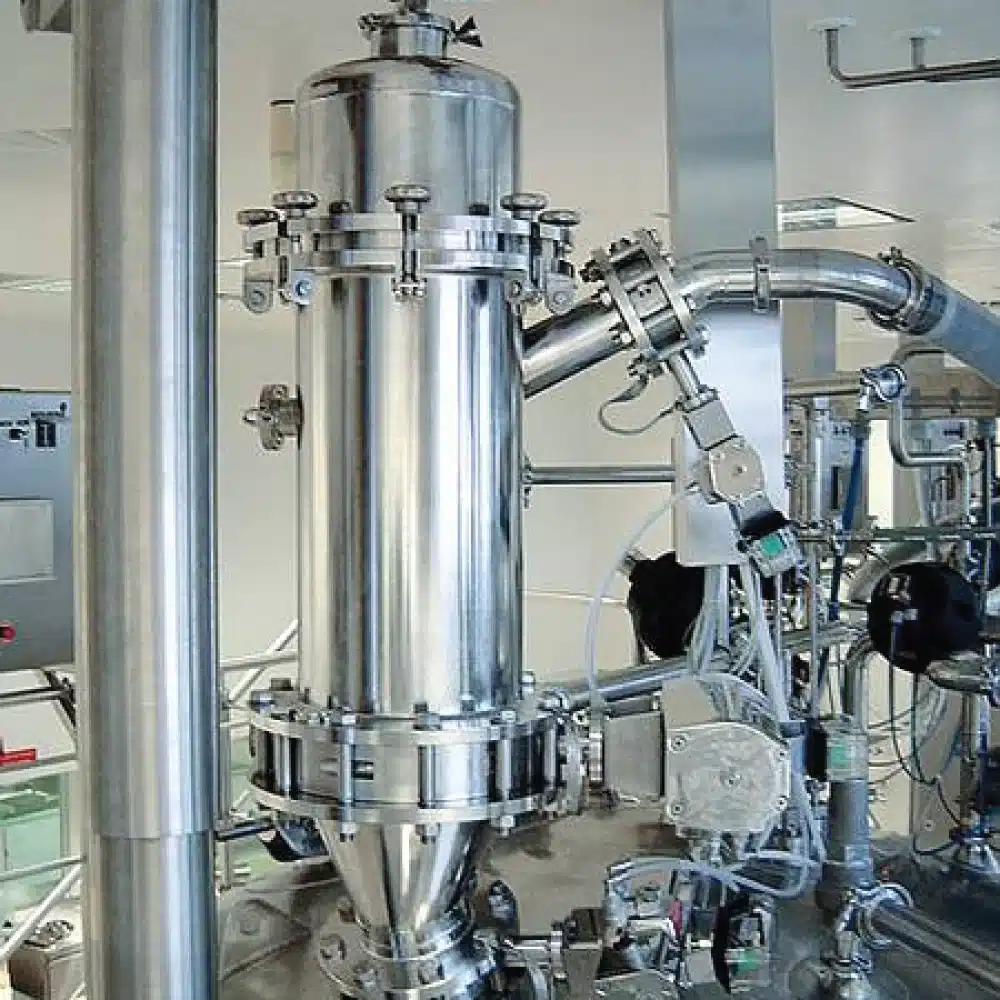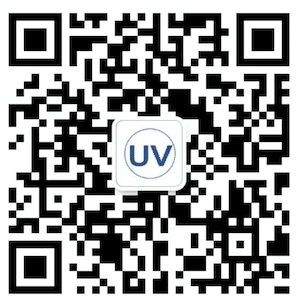Challenge:
Lithium battery production relies heavily on additives, which are typically supplied in large, powder-filled ton bags. Traditional methods for unloading, weighing, and feeding these additives – manual unpacking, weighing, and feeding – pose several challenges:
- Inaccurate weighing: Manual processes are prone to errors, impacting product quality consistency.
- Dusty environment: Manual handling generates dust, creating a hazardous work environment and potentially affecting product quality.
- Foreign matter contamination: Manual handling increases the risk of foreign objects like blades or debris contaminating the additives.
Solution:
Shanghai Youwei designed and implemented an automated weighing, metering, and feeding system to address these challenges and ensure efficient, dust-free handling of lithium battery additives:
Key Features:
- Precise Weighing: The system utilizes high-accuracy Mettler Toledo weighing sensors and automated speed-controlled feeding mechanisms. This combination ensures consistent and precise weighing, maintaining product quality at optimal levels.
- Dust-free Operation: The entire process operates within a closed system, eliminating dust leaks and promoting a clean and safe work environment. Additionally, a dedicated dust collector removes any dust generated during the process.
- Reduced Contamination Risk: High automation minimizes human contact with the materials, significantly reducing the risk of foreign matter contamination.
Process Flow:
- Dust-free Unloading: The ton bags are unloaded using a dedicated dust-free unloading station. This station connects the bag clamps and ton bags in a sealed manner, minimizing dust exposure during material transfer.
- Automated Feeding and Weighing: The ton bag materials are fed into the weighing and measuring tank through a rotary valve located beneath the bag clamp. The electrical control system interlocks the feeding speed and start/stop functions of the rotary valve with the weighing sensor, ensuring accurate and controlled material transfer.
- Vacuum Conveying or Direct Transfer: The weighed materials are either transferred to the reaction vessel using a vacuum feeder or directly deposited through a height-based system.
Technical Specifications:
- Weighing Accuracy: ±0.2%
- Equipment Material: Stainless Steel 304
Benefits:
- Improved product quality: Precise weighing eliminates inconsistencies and ensures consistent product quality.
- Enhanced safety: Dust-free operation minimizes worker exposure to harmful dust particles and creates a safer work environment.
- Reduced contamination risk: High automation minimizes the risk of foreign matter contamination.
- Increased efficiency: Automation streamlines the process, improving overall production efficiency.

